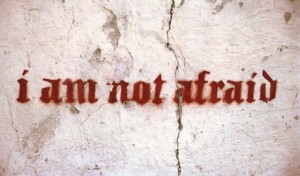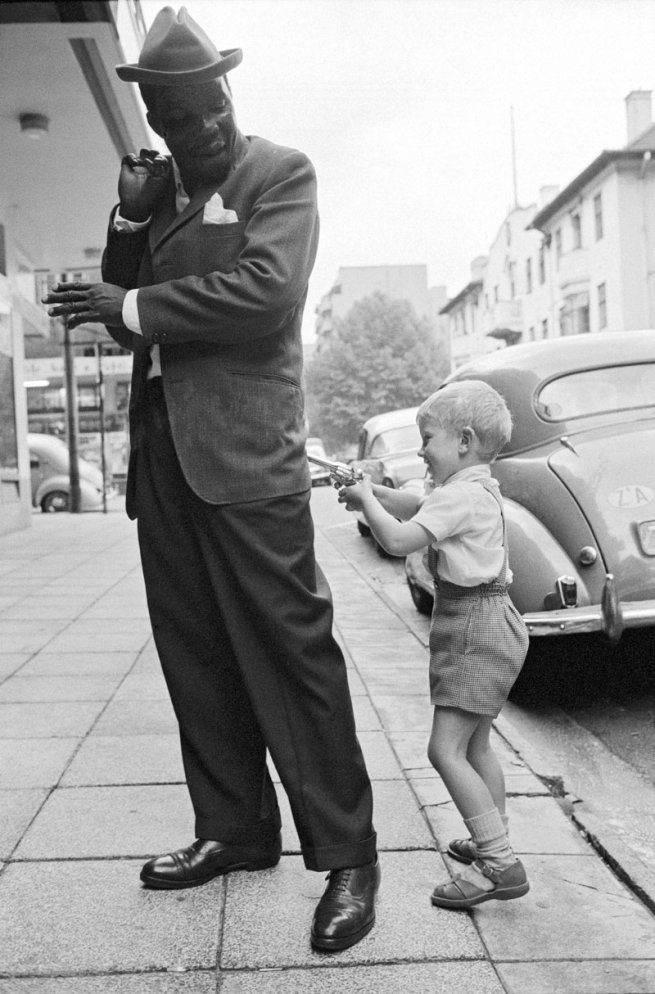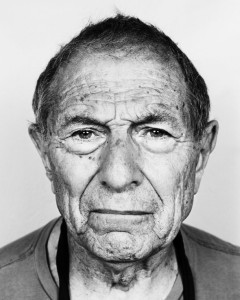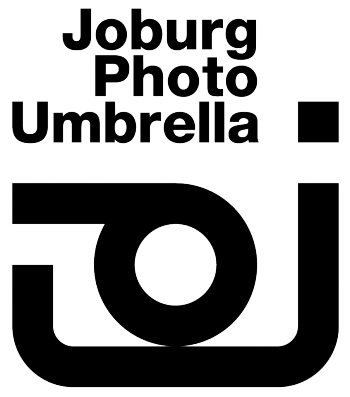
With documentary photography becoming more popular in South Africa and many of John’s students being involved in it, they are writing their own history. Most of them find it very interesting to photograph the struggling, working class, but also the upcoming middle class serves as a subject for many projects.
Jorrit Dijkstra interviews John Fleetwood of the Market Photo Workshop in Johannesburg.
Veleko, I am not afraid, 2002 (courtesy Goodman Gallery SA)
INSIDE THE MARKET PHOTO WORKSHOP
 John Fleetwood. Photo: Mack Magagne.
John Fleetwood. Photo: Mack Magagne.
When asked about the South African photography scene, John Fleetwood puts his glasses straight and takes a deep breath. “That’s a convoluted and complex matter”, the director of the Market Photo Workshop in Johannesburg says. “Exposure does not equal acknowledgment or meaning and we are seriously struggling to explain our audience what our photography is about.” By saying this John immediately explains the need for his training institute. Started by the world-renowned photographer David Goldblatt back in 1989, the Market Photo Workshop has played a major role in ensuring that ‘visual literacy reaches neglected and marginalized parts of South African society’.
David Goldblatt. Photo: David Southwood (copyright photographer).
Their initial focus was on social documentary, but has changed over time. Up until 2010 their majority of operation was about training and focussing on the successful photographers they educated, but ever since they also aim at creating a bigger photographic community and on other aspect of having a professional career within photography. “Now we are an established and well-respected place for national photographers to start their career, otherwise not having access to photography at all”, John explains. “Before photography in South Africa was mainly a means to document the socio-political landscape of apartheid, but that has changed dramatically. Many of our alumni have changed and transformed the landscape of contemporary South African photography, like Zanele Muholi, Jodi Bieber and Sabelo Mlangeni.”
 Zanele Muholi, Nosiphiwo Kulati, Orlando, Soweto, Johannesburg 2013 (courtesy Stevenson Gallery SA).
Zanele Muholi, Nosiphiwo Kulati, Orlando, Soweto, Johannesburg 2013 (courtesy Stevenson Gallery SA).
But back to the South African photography scene of today. What makes it so complex? “It’s especially the young photographers who don’t know what they actually want to show”, says John. “If their subjects is not within the realm of their audience, they easily miss out. This happens everywhere, but in my opinion especially in South Africa. Part of the audience already has an opinion about what photography should look like when made by Africans and that causes a wrong patron of expectations.” Next to that the status of photography in South Africa is also a complicated spectrum to break down according to John. On the one hand the Market Photo Workshop is gets a continues flow of talented photographers that pass through the workshop and are now established in the market. But at the same time the government gives less and less funding to art and culture projects and that affects the institute. “We don’t have the same budget to support our students and are both struggling. How that’s going to develop in the future is exciting as well as scary.”
The Market Photo Workshop, being relatively small, does have the advantage of being dynamic and able to shift their interests to stay ahead. Hence their change from solely a training institute to being a gallery and project space as well. “We run multi-layered public and development programs in order to create a viable and tangible transformation and development opportunities that engage with a greater community within society”, John, who has been guiding both the educational and artistic framework of the workshop for over ten years, explains. “Our main aim will stay with education in the future though. With forty percent of people under 25 unemployed, you can imagine how important a good education is, especially for photographers.”
JPU is a festival of photography initiated by the Market Photo Workshop in collaboration with the British Council’s Connect ZA and the Brighton Photo Biennial.
Luckily there is a strong interest in African photography from the international scene. Mainly abroad there is a growing market. John has to make a side mark to that unfortunately: “This interest is not really seen within South Africa itself. That’s a shame, because their talent should also be recognized by a local audience. Photography is the perfect medium to record what’s happening around you, not what is going on somewhere else. So it should be the subjects themselves who show interest in the work of the photographers from their own country.” With documentary photography becoming more popular in South Africa and many of John’s students being involved in it, they are writing their own history. Most of them find it very interesting to photograph the struggling, working class, but also the upcoming middle class serves as a subject for many projects.
 David Goldblatt, Hold Up in Hillbrow (courtesy Goodman Gallery SA)
David Goldblatt, Hold Up in Hillbrow (courtesy Goodman Gallery SA)
“Photography is a self narrative and starts within your own world. You have to position yourself and African photographers definitely chose the right subjects in modern day society to show a new view to the outside world. They are the best interpreters to what they experience every day are themselves.”
http://www.marketphotoworkshop.co.za/


